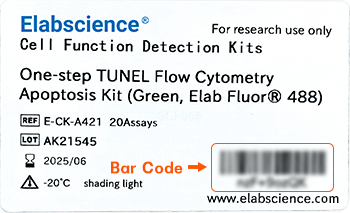Recombinant PI3 Kinase p85 alpha Monoclonal Antibody (E-AB-81435)

For research use only.
| Verified Samples |
Verified Samples in WB: Jurkat, C6, CHO-K1 Verified Samples in IF: MCF-7 |
| Dilution | WB 1:500-1:1000, IF 1:20-1:100 |
| Isotype | IgG |
| Host | Rabbit |
| Reactivity | Human, Rat, Hamster |
| Applications | WB, IF |
| Clonality | Rabbit Monoclonal |
| Immunogen | A synthetic peptide of human PI 3 Kinase p85 alpha |
| Abbre | PI3 Kinase p85 alpha |
| Synonyms | GRB1, P85A, Phosphatidylinositol 3 kinase, Phosphatidylinositol 3 kinase associated p 85 alpha, Phosphatidylinositol 3 kinase regulatory 1, Phosphatidylinositol 3-kinase 85 kDa regulatory subunit alpha, p85, p85 alpha, polypeptide 1 (p85 alpha), regulatory subunit |
| Swissprot | |
| Calculated MW | 84 kDa |
| Observed MW |
84 kDa
Western blotting is a method for detecting a certain protein in a complex sample based on the specific binding of antigen and antibody. Different proteins can be divided into bands based on different mobility rates. The mobility is affected by many factors, which may cause the observed band size to be inconsistent with the expected size. The common factors include: 1. Post-translational modifications: For example, modifications such as glycosylation, phosphorylation, methylation, and acetylation will increase the molecular weight of the protein. 2. Splicing variants: Different expression patterns of various mRNA splicing bodies may produce proteins of different sizes. 3. Post-translational cleavage: Many proteins are first synthesized into precursor proteins and then cleaved to form active forms, such as COL1A1. 4. Relative charge: the composition of amino acids (the proportion of charged amino acids and uncharged amino acids). 5. Formation of multimers: For example, in protein dimer, strong interactions between proteins can cause the bands to be larger. However, the use of reducing conditions can usually avoid the formation of multimers. If a protein in a sample has different modified forms at the same time, multiple bands may be detected on the membrane. |
| Cellular Localization | Cytosol, Endoplasmic reticulum, perinuclear endoplasmic reticulum membrane, Nucleus, Plasma Membrane, Other locations: cell-cell junction, cis-Golgi network, cytoplasm, membrane, phosphatidylinositol 3-kinase complex, phosphatidylinositol 3-kinase complex, class IA, protein complex. |
| Concentration | 300 μg/mL |
| Buffer | 50mM Tris-Glycine(pH 7.4), 0.15M NaCl, 40% Glycerol, 0.05% stabilizer and 0.05% protective protein. |
| Purification Method | Affinity Purified |
| Research Areas | Cancer, Metabolism, Immunology, Signal Transduction |
| Clone No. | R03-3C7 |
| Conjugation | Unconjugated |
| Storage | Store at -20°C Valid for 12 months. Avoid freeze / thaw cycles. |
| Shipping | The product is shipped with ice pack,upon receipt,store it immediately at the temperature recommended. |
| background | Phosphatidylinositol 3-kinase (PI3K) plays an important role in the metabolic actions of insulin and is required for adipogenesis. The PI3K pathway has also been identified as an important player in cancer development and progression. The Class IA PI3K heterodimer,which is composed of a P110 catalytic subunit and a P85 regulatory subunit,is activated upon association of the P85 subunit with upstream adaptor proteins or receptor tyrosine kinases. Mutations in PIK3R1 are implicated in cases of breast cancer and associated to SHORT syndrome. |
Other Clones
{{antibodyDetailsPage.numTotal}} Results
-
{{item.title}}
Citations ({{item.publications_count}}) Manual MSDS
Cat.No.:{{item.cat}}
{{index}} {{goods_show_value}}
Other Formats
{{formatDetailsPage.numTotal}} Results
Unconjugated
-
{{item.title}}
Citations ({{item.publications_count}}) Manual MSDS
Cat.No.:{{item.cat}}
{{index}} {{goods_show_value}}
-
IF:{{item.impact}}
Journal:{{item.journal}} ({{item.year}})
DOI:{{item.doi}}Reactivity:{{item.species}}
Sample Type:{{item.organization}}
-
Q{{(FAQpage.currentPage - 1)*pageSize+index+1}}:{{item.name}}





